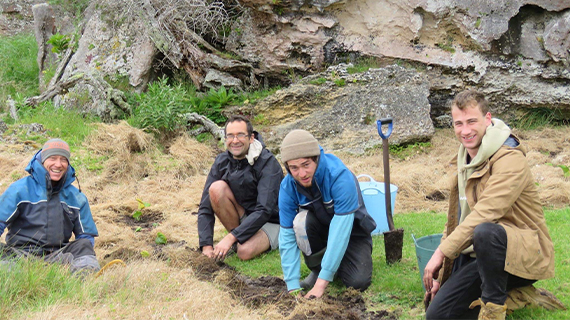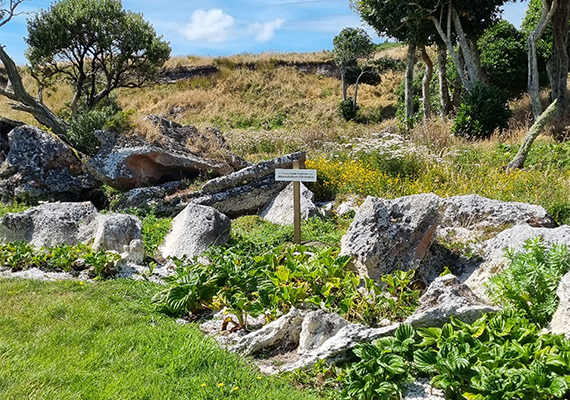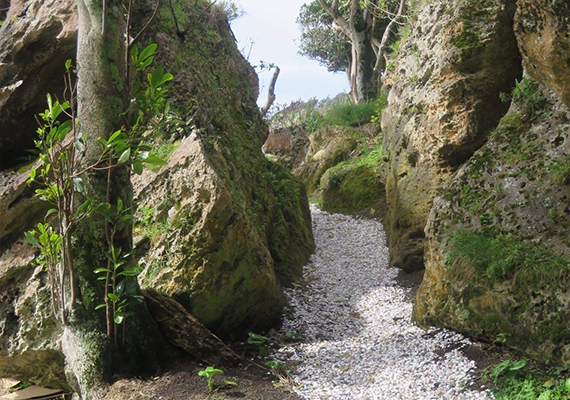Take a picnic and visit Blind Jim's

If you're heading out Blind Jim's way, take your picnic basket and enjoy a beautiful walk along the lagoon.
There are mown tracks, a new toilet, beautiful plants, and new fences that will protect not only Blind Jim's but also Chudleigh Reserve close to Waimahana Creek from wandering stock. This fencing will protect the foreshore and allow the natural bush to regenerate.
Val and Lois Croon are leading the restoration. Lois is the founding member of Chatham Islands Art and Restoration Trust which has sourced the funding and permission to enhance this beautiful part of our island.
Quick facts
Blind Jim's Creek was named after Jim Fordham who lived there. He was an American sailor who survived the wreck of the Erie, a whaling vessel. He was blind and the story goes that when 'Blind Jim' needed to go to Waitangi for supplies on his horse, the gates were opened to ensure a safe journey there and back.
Blind Jim's is famous for its fossil shark teeth. The teeth are formed where there is limestone. When the wind blows, the teeth are eroded by the water. Their age will vary between 60 million and 30 million years old.
The nearest volcano to Waimahana and Blind Jim's is Korako. This erupted about 6 million years ago from the seabed. The limestone is 60 million to 30 million years old which would have been altered by the eruption.
As you wander along the shore, the limestone cliffs host beautiful kowhai, newly planted Chatham Island Lilies, Aciphylla (speargrass), and many other Chatham Island endemic plants.


